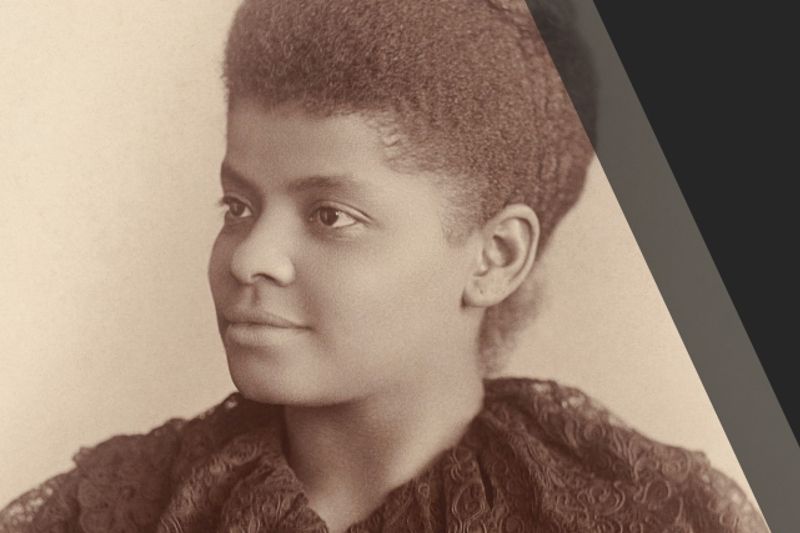The uniqueness of the African-American female's situation is that she stands at the crossroads of two of the most well-developed ideologies in America, that regarding women and that regarding the Negro. Occupying both female and black identities, enslaved African women faced the double oppressions of racism and sexism.
| Born | Ida Bell Wells July 16, 1862 Holly Springs, Mississippi, U.S. |
|---|---|
| Died | March 25, 1931 (aged 68) Chicago, Illinois, U.S. |
| Education | Freedman's School, Rust College, Fisk University |
| Occupation | Civil rights and women's rights activist, teacher, local paper editor |
| Spouse(s) | Ferdinand L. Barnett |
| Parent(s) | James Wells and Elizabeth "Izzy Bell" Warrenton |
| Website | www.idabwells.org |
Ida Bell Wells-Barnett (July 16, 1862 – March 25, 1931) was an African-American journalist, newspaper editor and, with her husband, newspaper owner Ferdinand L. Barnett, an early leader in the civil rights movement. She documented lynching in the United States, showing how it was often a way to control or punish blacks who competed with whites. She was active in the women's rights and the women's suffrage movement, establishing several notable women's organizations. Wells was a skilled and persuasive rhetorician, and traveled internationally on lecture tours.
In March of 1892, Ida B. Wells started a crusade against lynching after three friends of hers were brutally murdered by a Memphis mob.
Tom Moss and two of his friends, Calvin McDowell and Henry Stewart, were arrested for defending themselves against an attack on Moss' store. Moss was a highly respected figure in the black community, a postman as well as the owner of a grocery store.
A white competitor, enraged that Moss had drawn away his black customers, hired some off-duty deputy sheriffs to destroy the store. Moss and his friends.
Her suggestion that white women would willingly have sexual relations with black men enraged white Memphis. Locomotive not knowing the men were deputies, resisted. A gun battle broke out and several deputies were wounded.
Moss, his two friends, and one hundred other black supporters were arrested. Several nights later, masked vigilantes dragged Moss and his two friends from their cells, took them to a deserted railroad yard, and shot them to death.
Enraged by their deaths, Wells lashed out at the refusal of Memphis police to arrest the well known killers. She encouraged blacks to protest with boycotts of white-owned stores and public transportation.
Like many middle-class African Americans, Wells had accepted the myth that only poor blacks were lynched for heinous crimes.
Wells was now shocked into recognizing that even innocent middle-class black people could be targets.
As Wells investigated the reasons for lynching, she discovered that a number of victims were lynched not for rape, but for having sexual relations with consenting white women.
"Nobody in this section of the community believes that old threadbare lie that Negro men rape white women. If Southern men are not careful, a conclusion might be reached which will be very damaging to the moral reputation of their women."
Wells received much support from other social activists and her fellow club women. In his response to her article in the Free Speech, Frederick Douglass expressed approval of her work: "You have done your people and mine a service…What a revelation of existing conditions your writing has been for me." (Freedman, 1994). Wells took her anti-lynching campaign to Europe with the help of many supporters. In 1896, Wells founded the National Association of Colored Women, and also founded the National Afro-American Council. Wells formed the Women's Era Club, the first civic organization for African-American women. This later was named the Ida B. Wells Club, in honor of its founder.
In 1909, Barnett was asked to be a member of the "Committee of 40," which established the groundwork for the organization now known as the NAACP (National Association for the Advancement of Colored People), the oldest civil rights organization in the country.
Together with Frederick Douglass and other black leaders, she organized a black boycott of the 1893 World's Colombian Exposition in Chicago, for its failure to collaborate with the black community on exhibits representing African-American life. Wells, Douglass, Irvine Garland Penn and Ferdinand L. Barnett wrote sections of a pamphlet to be distributed there: "Reasons Why the Colored American Is Not in the World's Colombian Exposition" detailed the progress of blacks since their arrival in America and the workings of Southern lynchings. Wells later reported to Albion W. Tourgée that copies of the pamphlet had been distributed to more than 20,000 people at the fair. After the World's Fair in Chicago, Wells decided to stay in the city instead of returning to New York. That year she started work with the Chicago Conservator, the oldest African-American newspaper in the city.
Also in 1893, Wells contemplated a libel suit against two black Memphis attorneys. She turned to Tourgée, who had trained and practiced as a lawyer and judge, for possible free legal help. Deeply in debt, Tourgée could not afford to help but asked his friend Ferdinand L. Barnett if he could. Barnett accepted the pro bono job. Born in Alabama, Barnett had become the editor of the Chicago Conservator in 1878. He was an assistant state attorney for 14 years.














